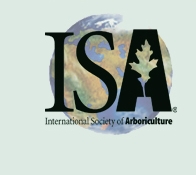A: The type and frequency of tree care depends on the specie, age, location, climate, and other factors that affect the tree’s growth. The first step is to educate yourself about your trees and understand their needs. It is imperative to understand that proper tree care is a life long process, and that planting and caring for a tree is a long-tern commitment, not just a one time deal. Contact your local tree care professional for proper assistance.
Q: What is pruning a tree?
A: Pruning is the cutting or removing branches or parts of trees or for improving the shape or growth of trees. This is the most common tree maintenance procedure. Usually, trees are pruned preventative or as a corrective measure to remove dead branches, crowded or rubbing limbs, eliminate hazards, and increase light and air penetration. Since each cut to a tree has the potential to change the growth, it is important to educate yourself, considering no branch should be removed without any reason.
A: Topping is the indiscriminate cutting of tree branches to stubs or lateral branches that are not large enough to assume the terminal role. Other names for topping including “heading,” “tipping,” “hat-racking,” and “rounding over.”
Topping is perhaps the most harmful tree pruning practice known. It is usually done to reduce the size of a tree. Often, homeowners top their trees because they feel that they have become too large for their property and are a hazard. However, topping will make a tree more hazardous in the long term and is very harmful to the health of a tree.
A: Mulches are materials placed over the soil surface to maintain moisture. Mulching is extremely beneficial to trees. It can reduce water loss from soil, minimize weed competition, and improve soil structure. Properly applied, mulch gives landscapes a health dose of benefits for your trees.
A: As soon as you notice any abnormality in your tree’s appearance, you should begin a careful examination of the problem. Insects and diseases can threaten a tree’s health. By identifying the specific symptoms of damage and understanding the causes, you may be able to diagnose the problem and take appropriate actions for treatment. You should contact a tree care professional for assistance immediately.
A: Trees are essential to our world, offering a wide range of benefits to our environment. However, trees become hazardous liabilities if they fall and injure people or damage property. Proper constant maintenance will help prevent and identify when a tree becomes dangerous. Evaluating the seriousness of a trees condition is best done by a professional ISA Certified Arborist.


